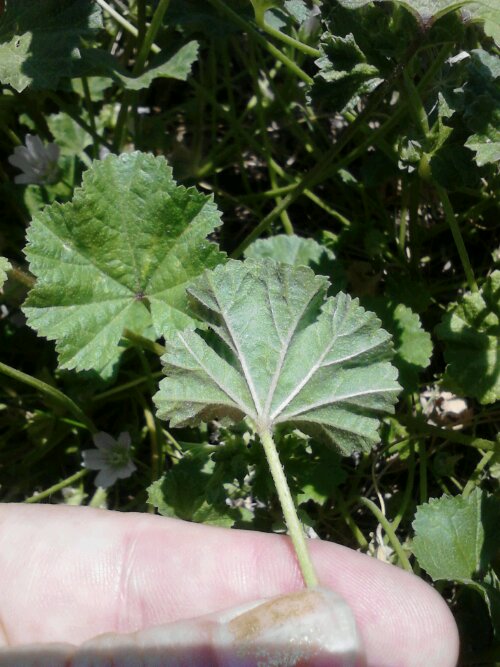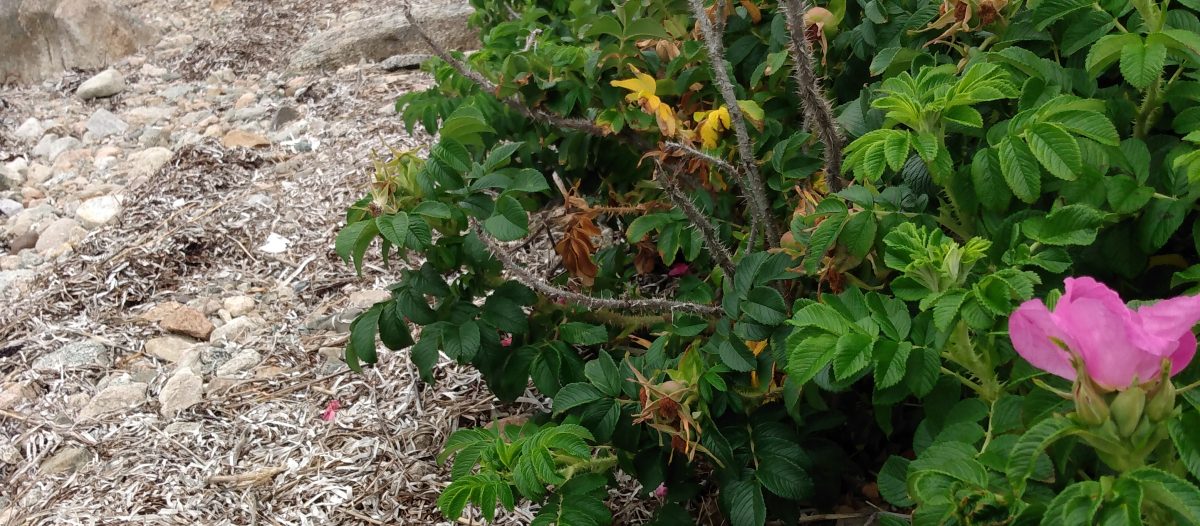Malva neglecta
Common Mallow
Malvaceae family
Nicknames: Cheeseweed, Dwarf Mallow, Round Mallow, Cheese Plant
………………………………………………………………………………………………………………..
***important…please do not confuse Common Mallow with the Common Carolina Geranium Weed. The geranium weed has more deeply dissected leaves but these two can be easily confused!***
Please note image of the Carolina Geranium weed in the following site:
http://www.msuturfweeds.net/details/_/carolina_geranium_12/#weeddetail
…………………………………………………………………………………………………………………
More about Common Mallow
Malva neglecta
Annual/Biennial
Habitat: grows in areas where
soil has been disturbed:
Vacant lots
Yards
Fields
Sides of roads
Cultivated fields
Likes sandy soil
Can grow in clay
or loamy soil
Likes full sunlight
Can do partial shade
Can grow with some dampness in soil
Prefers well drained soil
*Drought Tolerant
Can grow up to 2 feet tall
Flowers June-September
All parts including roots are edible
The following site is comprehensive and gives information on planting, pollination, avoiding nitrates, hardiness zones, where it grows in the world, etc.
http://www.pfaf.org/user/Plant.aspx?LatinName=Malva+neglecta
………………………………………………………………………………………………….
Underside of common mallow leaf:

These are all my photos. A happy endeavor and a learning reference tool also! Please bring a good field guide or forager who knows!
*Some people have confused ground ivy with common mallow!*
Some ground ivy smells like mint.
And, the edible ground ivy is in the mint family.
This is ground Ivy!
Some ground ivy is edible*** but not all ground cover is edible.***
Here are sites on edible ground ivy
http://www.pfaf.org/user/Plant.aspx?LatinName=Glechoma%20hederacea
…………………………………………………………………………………………………..
Now back to Common Mallow:
TRADITIONAL USE
According to http://www.livestrong.com:
Historians have traced Malva neglecta’s use as a vegetable back almost 3,000 years. The ancients used leaves and shoots as cooking greens and salad ingredients, while the seeds were used to accent dishes or as snacks. The plant’s traditional medicinal uses included soothing skin rashes and easing coughs. It was also used to reduce inflammation in the respiratory and gastrointestinal systems.
Not far away from this plant was this beautiful bridge above the Snake River.
INSIGHT AND REFLECTIONS:
I found the common mallow about 3 miles away from the Snake River Gorge in Idaho. This bridge and shadow forms an ellipse. A path that brings you back. After an orbit of other experiences. Like a marker in time. It helps me reflect upon the fact that the common mallow was the first edible/medicinal weed I learned about on this journey of documenting wild plants. It caught my interest as I was web surfing wild edible and medicinal plants. I posted it on facebook to share with others. I had found a helpful site…all about common mallow. Malva neglecta. I wanted to share an interesting site. That event was a marker for me. A few months later, I started writing and researching and photographing wild edibles myself. I started the blog that you are reading now. Malva neglecta took me on a journey. An elliptical one. Like an orbit. I am changed now since I first posted an internet site about common mallow. Because, it caught my interest then. And, now I have first hand experience looking for, researching and eating mallow as a wild edible. I have come around the ellipse changed. And, malva neglecta got me there. Waiting for me to turn the bend around the ellipse to find it in real space and time.
I am learning a lot about wild edibles. Documenting and photographing plants when and where I can. I am an enthusiast and a student as I go. I research as much as I can.
I wonder too, about the qualities each plant contains. Common mallow is mucilaginous and soothing. It helps with stomach upset. It soothes skin abrasians and heals skin wounds. It is common. It is found many places in the world. It has been a food during times of starvation. It is nutrient rich and is related to such beautiful plants as hollyhock and the beautiful Rose of Sharon. Even jute leaves are edible. The mallow family has taught me a lot and I have only just begun.
I did an art and poetry piece about common mallow: Malva neglecta. Reflecting on what I have learned about the plant and how it reflects some learning in my life.
So learning about plants and wild edibles and medicinal edibles means you get to “get real” about the experience. So, the next day after locating some and photographing it, I picked some common mallow for the first time. I wonder how many of my ancestors foraged for mallow too? I was excited about foraging. It did not look like an area that had experienced run off from farms or other pollutants. Common mallow can absorb nitrates from contaminated soil so some caution here is warranted.
But, it looked like a good foraging area to me so I went and picked some.
I tried some common mallow along with young lettuce leaves. What I noticed is that soon after I picked it the mallow wilted quickly.
I have limited refrigeration as I travel so I put the mallow in a bowl with a bit of water to keep it from wilting too much. I harvested at noon so the noon heat in Idaho in July may have contributed to the wilting. When I took the mallow out later they had absorbed the water and looked perky again.
I harvested the small wheels of fruit which people say look a lot like small wheels of cheese. I foraged the flowers, flower buds, stems and leaves too.
I boiled them for just a few minutes. They were delightful tasting. They could easily substitute or be mixed with spinach either raw or cooked.
I had a very favorable experience foraging Malva neglecta. I hope you do too!
(On a cautionary note here is some information about nitrates:)
http://www.livestrong.com/article/283850-why-is-sodium-nitrate-bad-for-you/
…………………………………………………………………………………………
While learning about foraging and wild edibles and medicinal plants, I really enjoy and appreciate this perspective by Susun Weed:
http://www.susunweed.com/Article_Malvaceae-family.htm
“Let’s focus on the Malvaceae family for a moment. One of my favorite ways of learning — and teaching — about plants is through their families. Each plant family is a group of plants that has the same flower chacteristics. Interestingly enough, the plants in a family frequently have the similar actions and uses. Learning about a plant family, rather than just one plant, not only helps you identify more plants, it gives you an idea of how to use them.”
HEALING PROPERTIES and FOOD USE:
Also according to Susun Weed:
“Virtually all parts of the mallows have been eaten or used as medicine including the fresh leaves, dried leaves, fresh roots, dried roots, and both green and ripe seeds.
The primary effect of most mallows is to soothe and heal mucus surfaces. Overheated respiratory, digestive, reproductive, and urinary systems especially benefit.
The mucilage present in the roots and seeds, and to a lesser degree the leaves, can help ease and heal irritations and infections such as sore throats, acid indigestion, stomach ulcers, ulcerative colitis, irritable bowel syndrome, bronchitis, chronic coughs, badder infections, interstitial cystitis, colds, and dry mouth. Some sources find mallow medicine helpful for those with diabetes, painful periods, and lack of menstruation.”
The mallow family includes beautiful, edible, medicinal, and useful plants such as hibiscus, Rose of Sharon, hollyhock, marshmallow, okra, jute, and cotton. (Cotton is not edible)
Susun Weed also describes mallow’s benefits including malva neglecta:
Excellent for “healing and relieving the pain of cuts, scrapes, boils, bruises, swellings, and stings…
I (Susun Weed) especially likes mixing chopped fresh hibiscus or mallow leaves with honey and applying this to my eyelids to relieve tired, sore, dry eyes. Works great as a facial, too!”
I found the following site and cited text very helpful.
http://jan.ucc.nau.edu/plants-c/bio414/species%20pages/malva%20neglecta.htm
“Uses Commonly used as a demulcent or emollient (7). Stems and leaves can be made as a poultice to relive pain and inflammation (7). Tea is pleasant tasting, good for sore throats and tonsillitis(7). Traditionally drunk in New Mexico for facilitation of labor and as a wash for skin irritations in infants (7). The tea can also help indigestion, stomach sensitivity, and can be gargled for cough relief (8). Entire plant has been boiled and eaten esp. used in soups; flowers are more pleasant in taste (2). Flowers are popularly eaten after being pickled (2). Leaves and young fruits have been used in salads (2).”
TRADITIONAL NATIVE AMERICAN USE:
Source: http://montana.plant-life.org/species/malva_neglec.htm
“The Cherokee Indians put the flowers in oil and mixed them with tallow for use on sores. The Iroquois Indians made a compound infusion of plants applied as poultice to swellings of all kinds, and for broken bones. They also applied it to babies’ swollen stomach or sore back. The Mahuna Indians used the plant for painful congestions of the stomach. The Navajo, Ramah Indians made a cold infusion of plants taken and used as a lotion for injuries or swellings. The plant is also an excellent laxative for young children.”
“Other Uses: Cream, yellow and green dyes can be obtained from the plant and the seed heads. The root has been used as a toothbrush.”
(The roots can be untwisted and dried to make a brush.)
http://www.angelfire.com/journal2/flowers/m.html
*Sap from the leaves, called ~mucilage~ can treat bites and stings.
*Mallow makes a weavable fiber…useful fiber
“The flowers were used formerly on May Day by country people for strewing before their doors and weaving into garlands. Musk mallow, was also used to decorate the graves of friends.”
NUTRITIONAL QUALITIES:
According to this Source: http://www.squidoo.com/malva
Mallows contain:
-Vitamin C
-Vitamin A
-Calcium
-Magnesium
-Potassium
-Iron
-Selenium
I have a treasured reference. A book I refer to often and have with me whenever I need to look at something or gain more information about a plant or how or when to forage, etc. This is it.
Edible Wild Plants. North American Field Guide to over 200 Natural Foods. by Thomas S. Elias and Peter A. Dykeman, Sterling Publishing 1982.
Here are guidelines and information from this reference. P. 146
FOOD USES AND PREPARATION:
Eat malva fruits raw
*Boiled root water can be a vegan
Substitute for meringue!
Strain roots also
Sweeten liquid
Boil until thick
Beat and drop spoonfuls on waxed paper and cool to make a candy. Roll in confectioner’s sugar
Fry boiled rootslices in butter
And ch. onion until browned
The whole plant contains mucilagelike material
Leaves can be eaten like spinach raw or cooked
Use in soups as a thickener
Flowers and fruit and seeds are edible
Along with stems, leaves and roots
Flower buds are good pickled and most likely fruit too.
……………………………………………………………………………………….
I hope that you enjoy foraging for Malva neglecta! Common mallow is a commmon wonderful edible and/or medicinal weed! Enjoy!











































